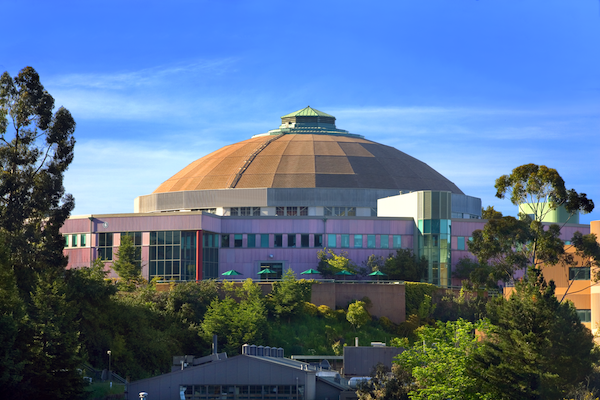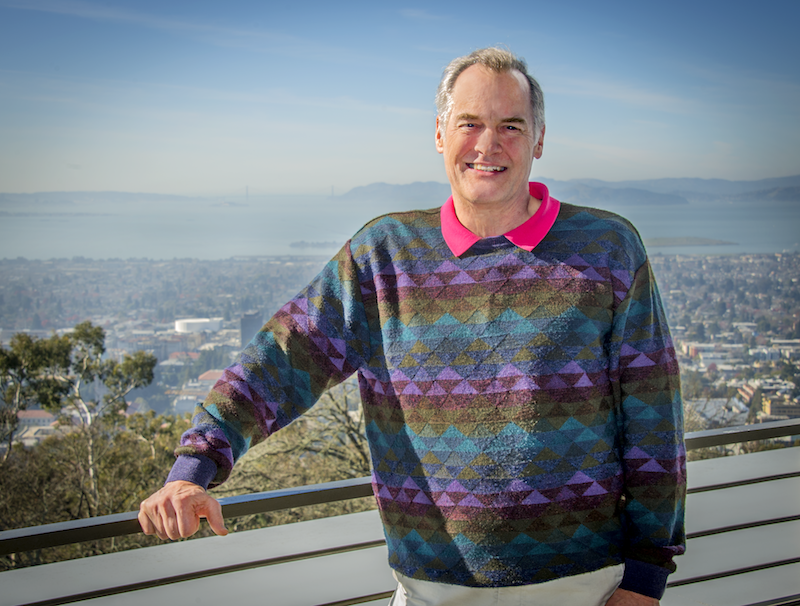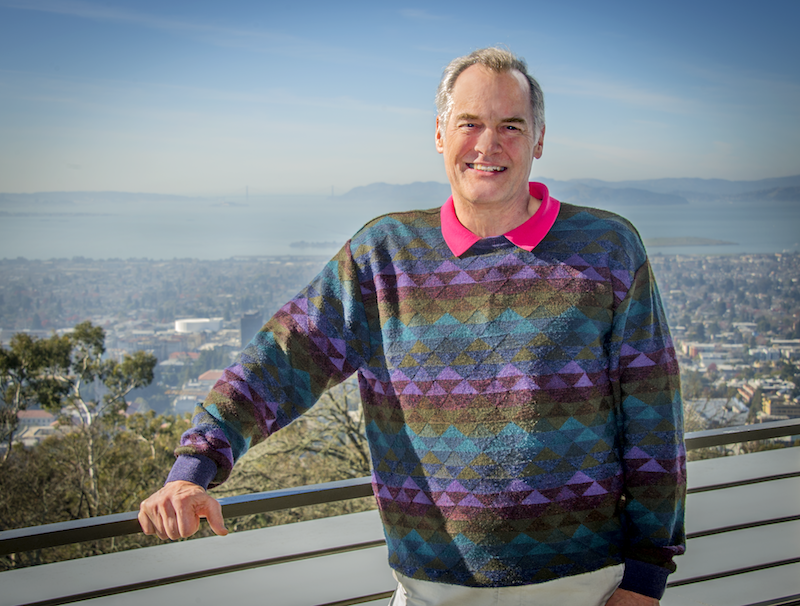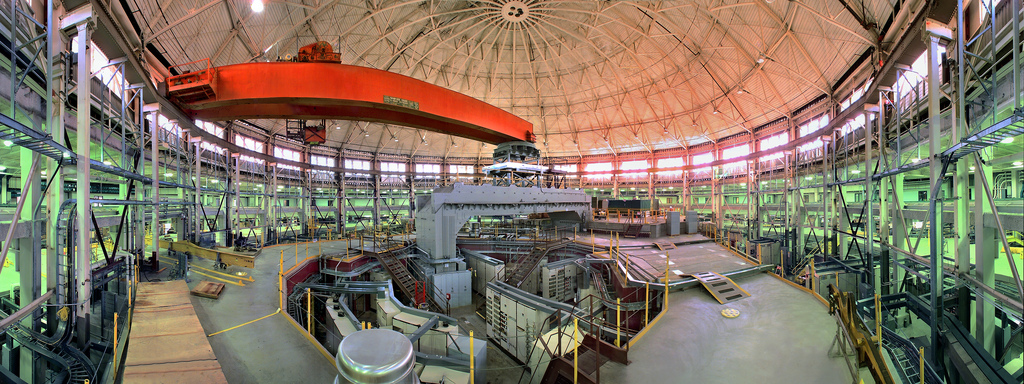By Ashley White
After an international search, Stephen D. “Steve” Kevan has been named the new director of the Advanced Light Source (ALS) at the U.S. Department of Energy’s Lawrence Berkeley National Laboratory (Berkeley Lab).
The ALS produces extremely bright X-ray, infrared, and extreme ultraviolet light for more than 2,000 visiting scientists each year. Up to 40 experiments can be performed simultaneously using the synchrotron, resulting in nearly 1,000 peer-reviewed scientific articles each year across a range of fields, from chemistry and materials sciences to biology and environmental sciences. The facility draws on the Lab’s unique and long-standing expertise in designing, building, and operating world-class accelerators to advance scientific research.
Kevan, a condensed matter physicist, has served as ALS director in an interim capacity since January, when the preceding director, Roger Falcone, stepped down after more than 11 years in the role. Previously, Kevan was the ALS division deputy for science for more than five years and has been on the faculty of the University of Oregon’s physics department since 1986.
Kevan takes on the role of ALS director at a pivotal point in its history. The facility, which will celebrate its 25th anniversary later this year, is taking its first steps toward a major upgrade, dubbed “ALS-U.”
The project is led by Berkeley Lab Senior Scientist Dave Robin and will take advantage of state-of-the-art technologies to endow the ALS with “soft” X-ray light more than 100 times brighter than the facility offers today, opening the door to new realms of scientific study and keeping the ALS’s world-leading capabilities.
Kevan played a principal role in developing the science case for upgrading the facility and, as ALS director, will coordinate closely with the ALS-U team throughout the project to ensure its success.
“The Advanced Light Source has been at the center of this laboratory’s research program since it produced its first light,” said Laboratory Director Mike Witherell. “Working closely with Steve over the past two years since I joined the lab, I have been very impressed with his deep understanding of the broad ALS science program and his commitment to ensuring that it will be a world-leading facility for another 25 years.”
“I’m delighted to have the opportunity to take on this role, and I appreciate the vote of confidence from the Lab’s leadership,” said Kevan. “I like the innovative spirit of the ALS. I look forward to supporting the ALS staff in their work and professional development, and to building on the ALS’s remarkable 25-year record of excellence as we prepare for the ALS Upgrade.”
Kevan is noted for his work in understanding how microscopic interactions and fluctuations produce novel material properties, particularly in the context of surface and thin-film physics and exotic magnetism. For more than three decades he has used synchrotron light sources around the world, including the ALS, to conduct his research. He also helped develop new synchrotron techniques such as angle-resolved photoemission spectroscopy, an accomplishment that earned him and ALS Senior Scientist Eli Rotenberg the American Physical Society’s Davisson-Germer Prize in 2017.

A view of the Advanced Light Source building at Berkeley Lab. (Credit: Roy Kaltschmidt/Berkeley Lab)
As one of the first scientific users of the facility in the early 1990s, Kevan has a much longer history with the ALS than his six years on staff. Even before he used the ALS to conduct research, he was part of the early planning discussions and workshops in the years leading up to its commissioning. In addition, he twice served as chair of its Users’ Executive Committee, representing the interests of scientific users of the facility to ALS management. In the years since, he has served on the scientific advisory committees of X-ray facilities in the U.S., Europe, and Asia.
“Steve has been such an influential figure at the ALS over the years and has been important to its success during that period,” said Energy Sciences Associate Laboratory Director Jeff Neaton. “He brings deep knowledge of ALS science and operations into his new role. I’m thrilled to have him as part of the Energy Sciences Area leadership team at such a critical juncture for this important facility and the laboratory.”
Kevan earned his Ph.D. in physical chemistry from the University of California, Berkeley in 1980, and received his bachelor’s degree in chemistry from Wesleyan University in 1976. After serving as a technical staff member of AT&T Bell Laboratories for six years, he joined the physics department at the University of Oregon in 1986, and the ALS in 2012.
In addition to the Davisson-Germer Prize, his professional awards include the 1986 National Science Foundation Presidential Young Investigator Award, a 1987 Alfred P. Sloan Foundation Research Fellowship, and the 1998 ALS David A. Shirley award for science. Kevan is a fellow of the American Physical Society and the American Association for the Advancement of Science.
The Advanced Light Source is a DOE Office of Science User Facility.
Ashley White is director of communications for the Advanced Light Source.
###
Lawrence Berkeley National Laboratory addresses the world’s most urgent scientific challenges by advancing sustainable energy, protecting human health, creating new materials, and revealing the origin and fate of the universe. Founded in 1931, Berkeley Lab’s scientific expertise has been recognized with 13 Nobel prizes. The University of California manages Berkeley Lab for the U.S. Department of Energy’s Office of Science. For more, visit www.lbl.gov.
DOE’s Office of Science is the single largest supporter of basic research in the physical sciences in the United States, and is working to address some of the most pressing challenges of our time. For more information, please visit science.energy.gov.


